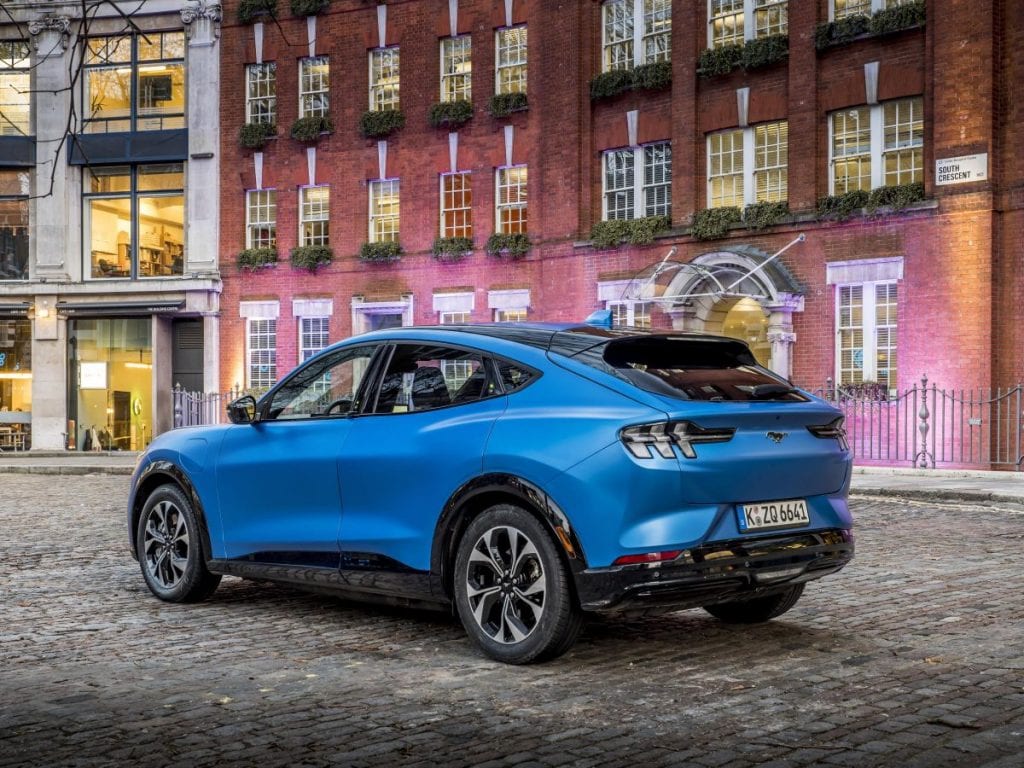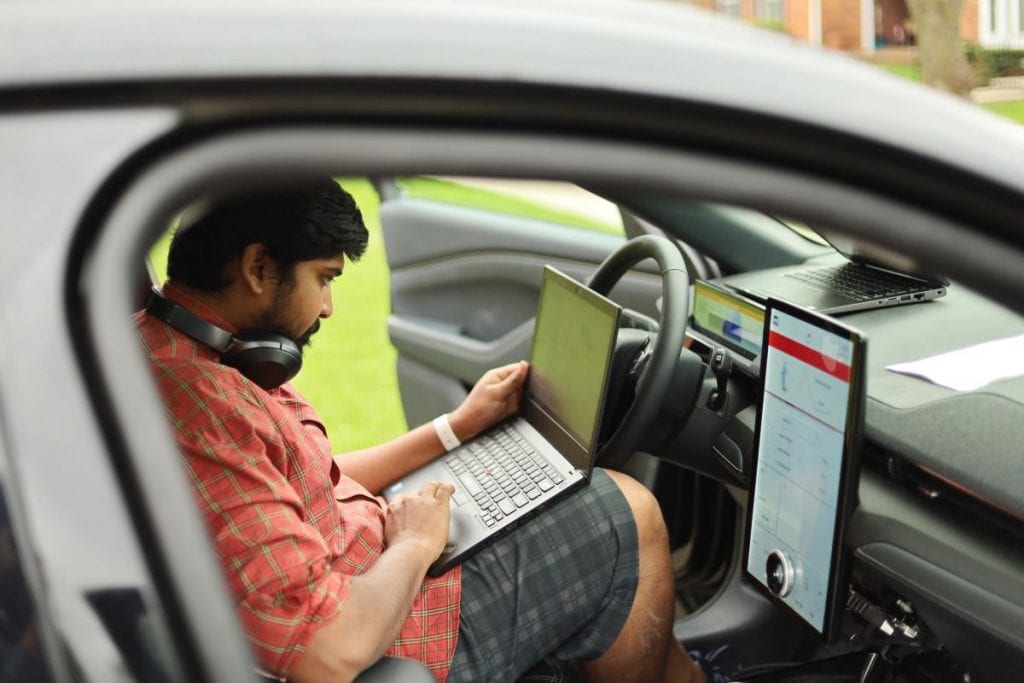Owners of the all-new, all-electric Mustang Mach-E won’t need to experience the fear of missing out, thanks to over-the-air updates continuously improving the SUV over the vehicle’s life without leaving home.
And unlike some other cars that require owners to wait while a software update takes place, Ford has developed a way to allow secure updates to download in the background, and in some cases, can be completed in under two minutes.
“The beauty of the Mustang Mach-E is that what our customers experience on day one is just the beginning – it will evolve to add even more features and capabilities over time,” said John Vangelov, connected services manager, Ford Motor Company. “Our clever over-the-air updates also minimize downtime through incredibly fast activation and ensure your Mustang Mach-E is always getting better, even when you’re asleep.”
These improvements go way beyond SYNC® updates. Nearly all Mach-E computer modules can be updated wirelessly, meaning Ford can deliver performance enhancements and entirely new features that might not exist when customers first take delivery of their vehicles.
Some installations will be virtually invisible to customers, who can select a regular time – such as the middle of the night – for updates while their Mach-E is parked. Many updates will be completed almost instantly after a customer starts their vehicle, while in-vehicle alerts will tell them what improvements have been installed.
Many can be completed in under two minutes, and more complex updates that might require the vehicle to be parked for longer can be scheduled to take place when customers find it most convenient.
Ford expects to deliver its first updates within six months after the first Mustang Mach-E vehicles are with customers. Owners will receive notifications detailing the software updates when they are available, which can then be applied using either Wi-Fi or cellular connections, depending on the update.

Mach-E can add 73 miles of range within 10 minutes
Ford’s latest testing shows that the all-new, all-electric Mustang Mach-E is estimated to add an average of 73 miles range in 10 minutes when using an IONITY charging station. Real-world tests delivered estimated improvement of 16 miles driving range or nearly 30 percent compared with previous, more conservative computer-simulated estimates for the Mustang Mach-E in extended-range battery, rear-wheel drive (RWD) configuration.
“Mustang customers love the open road, and less time recharging means more time enjoying the drive,” said Mark Kaufman, Global Director, Electric Vehicles. “We’ve made it a priority to make it faster to recharge their Mustang Mach-E, and we’re continuing to work with providers to make even more charge points available through FordPass to make it easier to recharge.”
The all-wheel drive (AWD) model is estimated to add an average of 66 miles of charge within approximately 10 minutes,1 both AWD and RWD configurations are estimated to achieve a 10 percent to 80 percent charge in 45 minutes.2
The standard-range battery in the Mustang Mach-E is estimated to charge an average of 56 miles in 10 minutes for RWD and 52 miles for AWD models,1 with a 10 percent to 80 percent charge in 38 minutes. 2
Mustang Mach-E’s targeted pure-electric driving range of more than 370 miles according to the World Harmonised Light Vehicle Test Procedure (WLTP) will help ensure customers can undertake longer journeys confidently.
Ford delivering for its customers even during a pandemic

To ensure Mustang Mach-E launches with this advanced capability as planned, Ford’s engineering team has found new ways to develop and test over-the-air updates in the midst of the coronavirus pandemic. Previously, teams would have to get together in the same physical space to access all the different vehicle modules needed to test over-the-air capabilities – but work-from-home requirements meant engineers needed to think fast to change the way they operate.
The team moved swiftly to set up remote access to all of the vehicle modules, even wiring them with tools enabling them to quickly re-program modules from their homes. What initially took five hours to program remotely can now be done in under 10 minutes.
“By quickly implementing remote access to our vehicle components, we’re ensuring our Mustang Mach-E customers can enjoy the great capabilities they’ve been looking forward to from the start, while providing the accommodations our engineers need to continue innovating from the safety of their homes,” said Vangelov.
1 Targeted range and charge time based on manufacturer tested values and calculation according to the WLTP drive cycle. Estimated miles added are based on the first 10 minutes of charging, beginning when the vehicle begins receiving charge. Officially homologated energy efficiency figures will be published closer to on-sale date. The charging rate decreases as battery reaches full capacity. Your results may vary based on peak charging times and battery state of charge. Actual vehicle range varies with conditions such as external elements, driving behaviours, vehicle maintenance, and lithium-ion battery age and state of health.
2 Charge time based on manufacturer tests. The charging rate decreases as battery reaches full capacity. Your results may vary based on peak charging times and battery state of charge.
3 Updates can be activated in under two minutes, while any updates that may require the vehicle to be parked can be scheduled to take place when customers find it most convenient.
The declared fuel/energy consumptions, CO2-emissions and electric range are determined according to the technical requirements and specifications of the European Regulations (EC) 715/2007 and (EU) 2017/1151 as last amended. Light Duty Vehicle type-approved using the World Harmonised Light Vehicle Test Procedure (WLTP) will have fuel/energy consumption and CO2-emission information for New European Drive Cycle (NEDC) and WLTP. WLTP will fully replace the NEDC latest by the end of the year 2020. The applied standard test procedures enable comparison between different vehicle types and different manufacturers. During NEDC phase-out, WLTP fuel consumption and CO2 emissions are being correlated back to NEDC. There will be some variance to the previous fuel economy and emissions as some elements of the tests have altered, so the same car might have different fuel consumption and CO2 emissions.
